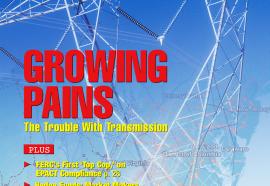Gravy Train
Utilities must trim the fat from excessive stock options, stock grants and executive pay.
This month’s cover story focuses on how utilities intend to find the talent they’ll need over the next few years to replace all those retiring baby boomers. And part of that puzzle naturally involves executive pay: how to attract the best and brightest without going overboard on rewards for performance.










